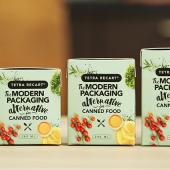Bonetti (Chiesi Group): “Focus on the quality and effectiveness of medicines”
“Chiesi’s approach towards the revision of the PPWR has been one of openness, albeit with some caution, because in the case of the pharmaceutical sector, in order to safeguard patients and medical staff, sustainability cannot ignore the specific characteristics of the product”.
As a Benefit Corporation and B Corp-certified company, Chiesi Farmaceutici has for some time been following a path of complete sustainability regarding the entire production chain, in the search for the best possible balance between rigorous pharmaceutical requirements and attention towards the environment. Andrea Bonetti, Public Affairs - Head of Brussels liaison office of the Chisi Group, tells us more.

«With regards to the different treatment that materials receive within the regulation, Bonetti begins, we are aware of the concerns expressed by the various operators in relation to the potentially discriminatory nature of certain provisions. As observers, we think that these rules can be finally approved by September 2024. Right from the beginning of this process, we have hoped for a harmonisation of European rules and a strengthening of the Single Market.
Chiesi’s approach towards the revision of the PPWR has been one of openness, albeit with some caution, because in the case of the pharmaceutical sector, in order to safeguard patients and medical staff, sustainability cannot ignore the specific characteristics of the product. We have, therefore, embarked on an informative campaign with regards to the European Commission which initially considered pharmaceutical packaging to be the same as all other types, without distinctions between primary packaging, which in our sector performs an essential role for ensuring the proper preservation of the active ingredient, and secondary packaging. The distance between the Commission’s environmental experts, the production industry and the EMA, the European Medicines Agency, was clear. It has, therefore, been necessary to clarify that material and packaging in contact with a medicine has to meet specific and very stringent requirements.
Chiesi has always been ready to test new materials, always, however, giving priority to the specific needs of the pharmaceutical sector and the regulatory aspect, which is very complex, as the focus needs to be on the quality and effectiveness of the drugs, as well as the safety of the patient and personnel with respect to the medicine released on the market.
The text approved on 4 March has many improved elements, such as the recyclability of the primary pack, which is exempted until a new assessment is made in 2035. Outer packaging, which is not in contact with the active ingredient but is important for controlling essential factors such as humidity, has been inserted, and there is the recyclability exemption for the transport of hazardous substances as referred to in article 6. Reusing certain containers that are used in production processes requires decontamination, with an environmental balance to be evaluated with respect to delivery through traditional channels.
Another important issue, for a sector that generates low volumes like pharma, is “recycling at scale”, which regulates other objectives such as collection systems. With regards to recyclability, the most critical exceptions aspect is the content of recycled plastic that conflicts with the specific techniques required for the correct preservation of the pharmaceutical product, given that it is not known which contaminants could pose a risk to the active ingredient. Looking at bio-based packaging, on the one hand it seems that these materials can represent a solution; on the other hand, it is not clear to what extent they can be an alternative. We were hoping that the text would clarify these aspects, but the Commission has reserved itself the right to evaluate the evolution of techniques over time, effectively affirming that as of today there are no concrete alternatives to plastic.
The packaging used in transport between suppliers can also be inserted into recyclability and reuse contexts. The transport of certain pharmaceutical products, however, involves the use of packaging with requirements that prevent contamination; it is, therefore, very ambitious to imagine recycled plastic in a recycled and recyclable container that transports sensitive contents. Packaging producers’ capacity for innovation will, therefore, play a crucial role. »





















